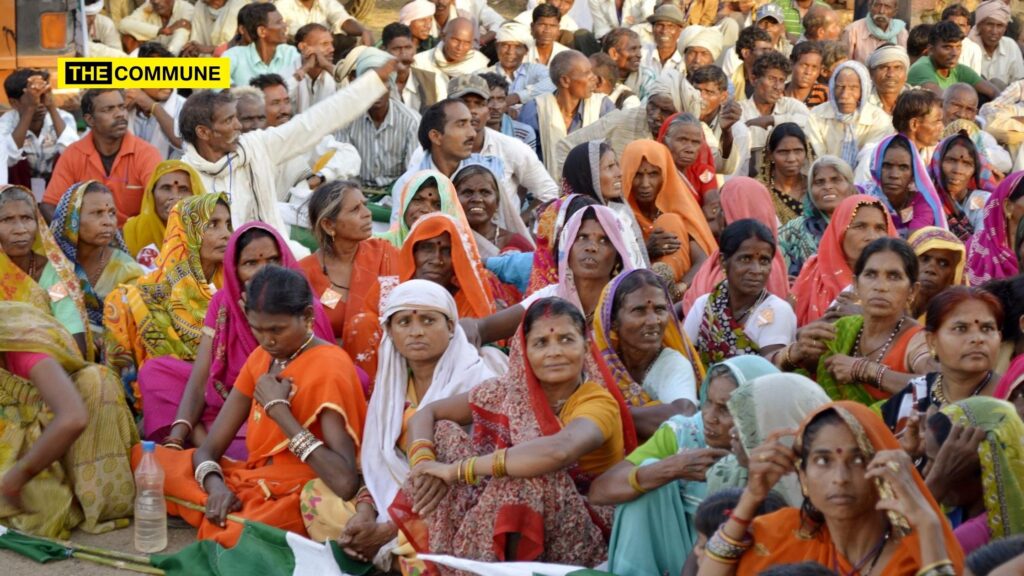In the past nine years, a staggering 24.82 crore individuals in India have transitioned out of multidimensional poverty, according to the findings of the NITI Aayog’s Discussion Paper titled ‘Multidimensional Poverty in India since 2005-06’. The discussion paper, unveiled by Prof Ramesh Chand, a Member of NITI Aayog, integrates technical contributions from the Oxford Policy and Human Development Initiative (OPHI) and the United Nations Development Programme (UNDP) who were the architects of the index in 2010.
The Multidimensional Poverty Index (MPI), a globally accepted measure, extends beyond monetary aspects to comprehensively gauge poverty in various dimensions. Utilizing the Alkire and Foster (AF) method, the MPI identifies individuals as impoverished based on metrics designed to assess acute poverty, providing an additional perspective to conventional monetary poverty measures.
According to the Discussion Paper, India has witnessed a substantial decline in multidimensional poverty, decreasing from 29.17% in 2013-14 to 11.28% in 2022-23, marking a reduction of 17.89 percentage points. The paper also highlights a faster decline in the poverty headcount ratio between 2015-16 and 2019-21 with 10.66% annual rate of decline compared to the period from 2005-06 to 2015-16 of 7.69% annual rate of decline.
As a result of Government focused pro-poor initiatives and programmes in the past 9 years:
➡️24.82 crore Indians escape Multidimensional Poverty.
➡️Steep decline in Poverty Headcount Ratio from 29.17% in 2013-14 to 11.28% in 2022-23.
➡️All 12 MPI indicators show significant… pic.twitter.com/nju32z7hYz
— NITI Aayog (@NITIAayog) January 15, 2024
Consequently, India is on track to achieve its Sustainable Development Goal (SDG) target of halving multidimensional poverty well before 2030.
Notable initiatives such as Poshan Abhiyan and Anemia Mukt Bharat have significantly improved access to healthcare, resulting in a substantial reduction in deprivation. The Targeted Public Distribution System, one of the world’s largest food security programs, covers 81.35 crore beneficiaries under the National Food Security Act, ensuring the provision of food grains to both rural and urban populations. Recent decisions, including the extension of free food grain distribution under Pradhan Mantri Garib Kalyan Anna Yojana for an additional five years, underscore the government’s commitment.
Various programs addressing maternal health, the distribution of clean cooking fuel through Ujjwala Yojana, expanded electricity coverage via Saubhagya, and transformative campaigns like Swachh Bharat Mission and Jal Jeevan Mission have collectively elevated living conditions and overall well-being.
Additionally, flagship programs such as Pradhan Mantri Jan Dhan Yojana and PM Awas Yojana have played pivotal roles in financial inclusion and providing secure housing for the underprivileged.
Some traditionally high-poverty states have made noteworthy progress in helping people escape poverty, contributing to a reduction in inter-state disparities in multidimensional poverty such as Uttar Pradesh witnessed the most significant decrease, with 5.94 crore people escaping multidimensional poverty in the last nine years, followed by Bihar at 3.77 crore, Madhya Pradesh at 2.30 crore, and Rajasthan at 1.87 crore.
What is National Multidimensional Poverty Index?
The National Multidimensional Poverty Index (MPI), overseen by NITI Aayog, serves as a key tool for assessing and monitoring the performance of States and Union Territories in addressing multidimensional poverty. NITI Aayog, functioning as the nodal agency for MPI, has played a pivotal role in developing an indigenous index tailored to the specific needs of the country. To institutionalize this process, NITI Aayog has established an inter-ministerial MPI Coordination Committee, garnering support from various entities such as NFHS (National Family Health Survey), the International Institute for Population Sciences (IIPS) under the Ministry of Health and Family Welfare, as well as experts from the Ministry of Statistics and Programme Implementation (MoSPI). Technical partners, including OPHI and UNDP, have also contributed to this collaborative effort.
The National MPI comprises three dimensions—Health, Education, and Standard of Living—each assigned equal weight and represented by a total of 12 indicators. Initiatives like the State Support Mission provide assistance to States and Union Territories in capacity building and the establishment of State Institutions for Transformation.
To ensure effective monitoring of implementation progress, a dashboard has been developed by the Development Monitoring and Evaluation Office (DMEO), an attached office under NITI Aayog. This dashboard is designed to facilitate real-time tracking of select Global Indices, including MPI, and allows for the monitoring of State-led reforms. These efforts represent proactive steps taken to reduce multidimensional poverty in the country.
(Inputs with PIB)

